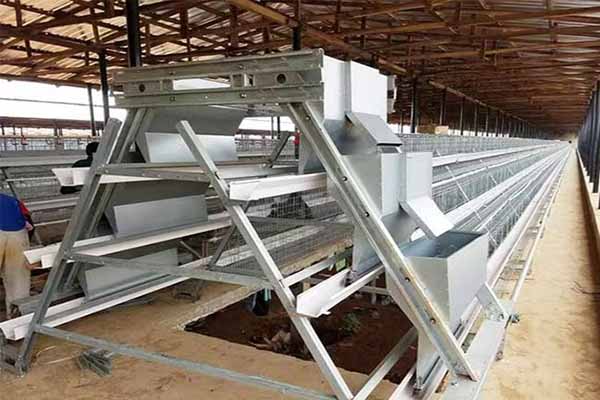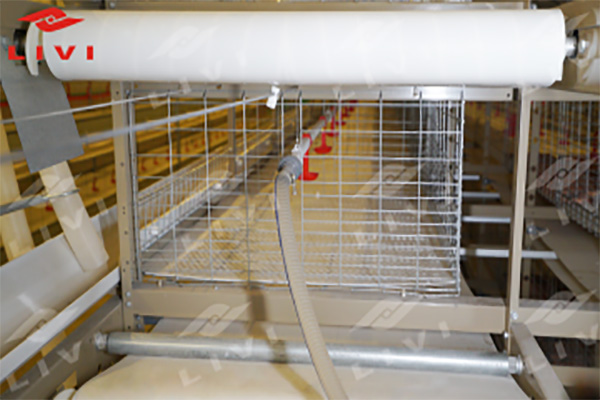Cost Analysis of Automation Equipment for a 10,000 Chicken Farm in Uganda
Time : 2025-06-27
The poultry industry in Uganda has been growing at a rapid pace, with many farmers looking to expand their operations. One of the key areas where farmers are focusing on is automation. A 10,000 chicken farm requires advanced automation equipment to ensure efficiency and reduce labor costs. In this article, we will analyze the cost of automation equipment for a 10,000 chicken farm in Uganda.

Introduction to Poultry Farm Automation
Poultry farm automation involves the use of advanced technology to automate various processes in the farming cycle. From feeding and watering to climate control and waste management, automation can significantly improve the efficiency and productivity of a farm . The cost of automation equipment varies depending on the scale of the farm and the specific needs of the farmer.
. The cost of automation equipment varies depending on the scale of the farm and the specific needs of the farmer.
Components of Automation Equipment for a 10,000 Chicken Farm
A 10,000 chicken farm typically requires the following automation equipment:
- Feeding Systems: These systems automate the feeding process, ensuring that the chickens receive the right amount of feed at the right time. Options include chain feeders, belt feeders, and automated feeding systems.
- Watering Systems: Automated watering systems provide clean and fresh water to the chickens. They can be floor drinkers, nipple drinkers, or cup drinkers.
- Climate Control Systems: These systems maintain the optimal temperature and humidity levels in the chicken house. They include heating, cooling, and ventilation systems.
- Monitoring Systems: These systems monitor the health and behavior of the chickens. They include weight scales, temperature and humidity sensors, and motion sensors.
- Waste Management Systems: These systems automate the collection and removal of chicken waste. They include belt conveyors, screw conveyors, and composting systems.
Cost Analysis of Automation Equipment
The cost of automation equipment for a 10,000 chicken farm in Uganda can be broken down into the following categories:
Feeding Systems
The cost of feeding systems can vary significantly depending on the type of system chosen. Chain feeders and belt feeders are relatively affordable, with prices ranging from $1,000 to $5,000. Automated feeding systems, on the other hand, can cost upwards of $10,000 to $30,000. The choice of feeding system will depend on the specific needs of the farm and the budget available.
Watering Systems
Watering systems are also available in various price ranges. Floor drinkers and nipple drinkers are the most common options and can be purchased for $500 to $2,000. Cup drinkers are more expensive, with prices ranging from $2,000 to $5,000. The choice of watering system will depend on the size of the flock and the space available in the chicken house.
Climate Control Systems
The cost of climate control systems can vary widely. Basic heating and cooling systems can be purchased for $2,000 to $5,000, while more advanced systems with automated controls can cost upwards of $10,000 to $50,000. The choice of system will depend on the climate in Uganda and the specific requirements of the farm.
Monitoring Systems
Monitoring systems are relatively affordable, with prices ranging from $500 to $2,000. These sy stems can help farmers track the health and growth of their chickens, as well as monitor environmental conditions.
stems can help farmers track the health and growth of their chickens, as well as monitor environmental conditions.
Waste Management Systems
Waste management systems can range in price from $1,000 to $5,000. These systems help reduce the risk of disease and improve the overall hygiene of the farm.
Total Cost of Automation Equipment
Based on the above analysis, the total cost of automation equipment for a 10,000 chicken farm in Uganda can range from $15,000 to $120,000. This cost includes all the necessary components for feeding, watering, climate control, monitoring, and waste management.
Conclusion
Investing in automation equipment for a 10,000 chicken farm in Uganda can lead to significant improvements in efficiency, productivity, and profitability. While the initial cost may be high, the long-term benefits can make it a worthwhile investment. It is important for farmers to carefully consider their needs and budget when selecting the right automation equipment for their farm.











